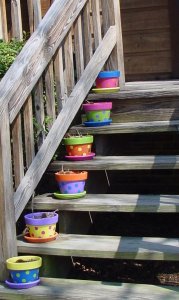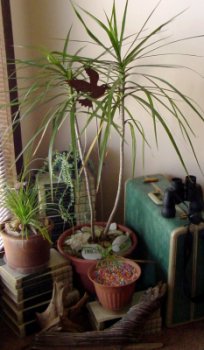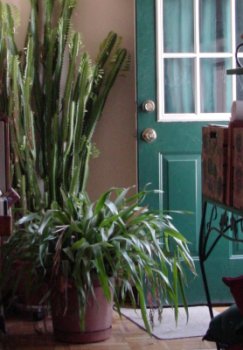In several posts now I have expressed my frustrations with winter cycling and my disappointment over not riding as much as I did during warmer months. But today I realised that winter is more than halfway through already, and I have been cycling all along. Not as much as in the Summer and Fall, but cycling none the less. So it's not so bad, really. Not because I am becoming more brave or skillful, but simply because it doesn't snow
all the time and the temperature isn't
always below 30°F. On some days it is even enjoyable again.

Since mid December I have been riding my Pashley Princess exclusively. Initially I considered getting a "beater bike" for the winter, but came to the conclusion that I should just stick with the Pashley. It was definitely the right decision.

I don't need a winter bike, because the Pashley Princess Sovereign
is a winter bike. For one thing, everything on it was designed to withstand the elements: The fenders, internal gear hub, fully enclosed chaincase, enclosed hub brakes, dynamo-powered lighting, extremely durable powdercoat and rustproof components make her essentially a
zero-maintenance bike in winter weather conditions. I know that some feel the Princess is "too pretty" to ride in the winter, but the prettiness in no way detracts from her toughness and utility. It simply does not make sense to get a sub-par winter bike because you think your bicycle is too attractive to be used the way it was designed to be used.

The other major benefit or riding a Pashley Princess in winter, is its incredible stability and indifference to weather conditions. I had noted this several times when riding in the rain, and it is also true in slushy winter weather. I am trying to put my finger on what feels so good about this bike in bad weather. It is probably the combination of the heavy frame, stable handling, wide tires and enclosed brakes that makes it feel just so wonderfully stable where other bikes don't. I can ride this bike through a flooded road and corner at close to normal speed, and it will behave the same as on a dry road. It's pretty amazing and certainly helps in winter, when there is either slush or lake-like puddles from melted snow everywhere.

Pashley's platform pedals interact well with all of my winter boots and I have not had to worry about slipping.

And my trusty Carradice Barley saddlebag has proven itself to be completely rain and snow proof even in the nastiest weather. All in all, I cannot think of a nicer winter setup: I simply ride the Pashley and don't worry about a thing other than watching out for sudden chunks of hard snow on the road.

Speaking of obstacles on the road, here is a stunner I experienced cycling home at dusk yesterday. On one of the side streets near my house the asphalt cracked so much that it formed a "step" in the middle of the road, with 8+ inches of elevation change. If you are coming from the direction this picture was taken, you can see the rise as you approach. But coming from the opposite direction (as I was last night) you really cannot see the drop that awaits you; it just looks like a regular crack. So I basically
launched my Pashley into the air by riding straight over this crater at full speed. I am glad to report that the bike handled it fine. It landed hard, but was very stable, and just kept going as if nothing happened. I did stop to check the tires and rims afterward (as well as take some pictures, in disbelief that such a thing could have formed right in the middle of the road overnight), and everything is perfectly fine. I wonder how other bikes would have fared under the same conditions.

Having ridden the Pashley Princess in both warm months and cold, I can say that she is really at her best in poor weather conditions. I can think of few other bikes that are so well suited for the title of "winter bike". And if she is beautiful to boot? Well, I won't hold that against her!
 Breaking with tradition, as oddly happened also in 2005, there was reasonable weather on the upper mountain over Memorial Day weekend. The normal Pacific NW tradition calls for drippy rain and snowfall. So with the good weather came a whole bunch of skiers and climbers.
Breaking with tradition, as oddly happened also in 2005, there was reasonable weather on the upper mountain over Memorial Day weekend. The normal Pacific NW tradition calls for drippy rain and snowfall. So with the good weather came a whole bunch of skiers and climbers.  Baby on board
Baby on board That afternoon there were several visitors in the area where I was staying...
That afternoon there were several visitors in the area where I was staying...




 Near record amounts of snow fell at Paradise in December and early January. The weather station there recorded over 360 inches (over 30 feet) of the white stuff so far this fall and winter. At that rate, the mountain is on track to break the previous snowfall record (93 feet in 1972)... The breakneck pace of snowfall has blanketed the entire Cascade range and has also caused a significant amount of avalanche distress and accidents. The thick unstable
Near record amounts of snow fell at Paradise in December and early January. The weather station there recorded over 360 inches (over 30 feet) of the white stuff so far this fall and winter. At that rate, the mountain is on track to break the previous snowfall record (93 feet in 1972)... The breakneck pace of snowfall has blanketed the entire Cascade range and has also caused a significant amount of avalanche distress and accidents. The thick unstable  At Paradise on Mount Rainier, a
At Paradise on Mount Rainier, a  It's been over 20 years since someone has been caught and killed in a "winter" related avalanche on the Paradise side of the mountain. Climbers have certainly been caught, but those incidents happened in the spring and fall at higher elevations. The last four avalanche fatalities were in June (3) and October (1), not your traditional "avalanche season." Left: Mountain Rescue volunteers working a probe-line, photo by Stefan
It's been over 20 years since someone has been caught and killed in a "winter" related avalanche on the Paradise side of the mountain. Climbers have certainly been caught, but those incidents happened in the spring and fall at higher elevations. The last four avalanche fatalities were in June (3) and October (1), not your traditional "avalanche season." Left: Mountain Rescue volunteers working a probe-line, photo by Stefan  Over the last week, we've enjoyed mostly clear and cold weather (as attested by Chris Olson's image to the left). This allowed 3 climbers an opportunity to summit via the
Over the last week, we've enjoyed mostly clear and cold weather (as attested by Chris Olson's image to the left). This allowed 3 climbers an opportunity to summit via the  The 29th annual reunion of the Phend family was held in the Nappanee community Park, August 28th 1938.
The 29th annual reunion of the Phend family was held in the Nappanee community Park, August 28th 1938.
 Had to let everyone see the photo my sister sent to me. Thanks, Sis.
Had to let everyone see the photo my sister sent to me. Thanks, Sis.













 While in Yorktown, we headed out to find Pop's. My friend Julie used to live in this area and she recommended it. It was closed when we got there, so we ate at Bill's Seafood House across the street instead since she recommended that too. It was great food at a great price! The waitress was incredible and the hush puppies were the best we've ever had.
While in Yorktown, we headed out to find Pop's. My friend Julie used to live in this area and she recommended it. It was closed when we got there, so we ate at Bill's Seafood House across the street instead since she recommended that too. It was great food at a great price! The waitress was incredible and the hush puppies were the best we've ever had.






